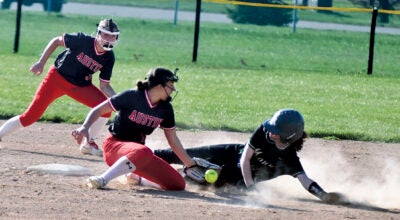Battle of the Bulge, Part 3: The Siege of Bastogne
Published 6:01 am Wednesday, December 18, 2019
Read part 1 here: Autumn Fog
Read part 2 here: Surprise Attack
When the seriousness of the German attack became apparent, Eisenhower proceeded to call up reserve units to plug holes in the Allied lines. Among them were the U.S. 82nd and 101st Airborne Divisions. The 82nd was sent to St. Vith, Belgium, which fell to the Germans on Dec. 22, while the 101st was sent to aid elements of the U.S. 10th Armored Division in the defense of the southeastern Belgian town of Bastogne, the site of a key road junction.
On Dec. 19, 1944, the 101st arrived at the town. Because of the hastiness of their arrival, the men of the 101st had little time to prepare; many arrived low on ammunition, food and medical supplies and without proper winter gear. Several senior leaders, including division commander Maj. Gen. Maxwell Taylor, were elsewhere when the division was called up.
The following day, the Germans completely surrounded the town, outnumbering the Americans five-to-one. Despite this, the 101st repelled several attacks by as many as six German divisions, two of which were armored divisions. But with Allied planes grounded and unable to resupply the 101st, the question of how long they could hold out remained unanswered.
On Dec. 22, Gen. Heinrich Freiherr von Lüttwitz, commander of the XLVII Panzer Corps, sent a message to Brig. Gen. Anthony McAuliffe, acting commander of the 101st. In his message, von Lüttwitz wrote, “The fortune of war is changing. This time the U.S.A. forces in and near Bastogne have been encircled by strong German armored units… There is only one possibility to save the encircled U.S.A. troops from total annihilation: that is the honorable surrender of the encircled town… If this proposal should be rejected one German Artillery Corps and six heavy A. A. Battalions are ready to annihilate the U.S.A. troops in and near Bastogne.”
McAuliffe initially thought the Germans were surrendering to him, but when his staff corrected him, McAuliffe said, “Us surrender? Aw nuts!” McAuliffe then asked how he should respond. The late Lt. Gen. Harry Kinnard, at the time a lieutenant colonel, later recalled, “I told him, ‘That first remark of yours would be hard to beat.’ McAuliffe said, ‘What do you mean?’ I answered, ‘Sir, you said ‘Nuts.’’”
McAuliffe wrote the following message: “To the German Commander. NUTS! The American Commander.”
When the response was given to the German messenger, he asked what it meant. The American who delivered it promptly responded, “It means ‘Go to Hell!’”
McAuliffe’s response boosted morale among the 101st. As they continued to hold out, Allied press throughout Europe and the United States heralded the bravery of the 101st. Gen. George Patton announced to the town’s defenders that his Third Army was on its way.
Hitler was furious and ordered the town destroyed. On Dec. 24, Luftwaffe bombers attacked Bastogne, destroying an aid station and killing 21 people. On Dec. 25, elements of the XLVII Panzer Corps attacked at several individual locations on the west side of Bastogne’s perimeter, but failed to take the town. The defenders of Bastogne had held. By Dec. 26, Patton’s forces had broken through the encirclement, though many in the 101st have argued they were not in need of rescue.
By Dec. 23, the weather had cleared up enough for Allied planes to start flying again. Allied airpower decimated German armored spearheads, forcing many to break off their offensives. On Dec. 26, after a vicious 10-day fight, the Germans were defeated at the critical Battle of Elsenborn Ridge thanks to a heroic stand by elements of the U.S. Second and 99th Infantry Divisions at the twin Belgian villages of Rocherath and Krinkelt. While the Americans suffered 15,000 casualties, including 5,000 killed, at Elsenborn Ridge, the Germans lost 114 tanks.
The Germans were also experiencing fuel shortages, further hampering their ability to continue the attack. Field Marshal Hasso von Manteuffel’s Fifth Panzer Army was within five miles of the Meuse River when its attack ground to a halt of Dec. 31, nowhere near its objective of Antwerp. Hitler’s gamble had failed; his forces had penetrated 65 miles into Allied territory, creating a 65-mile by 45-mile “bulge” in the Allied line.
It took the Germans 15 days to capture that territory. It would take the Allies a month to take it back.


